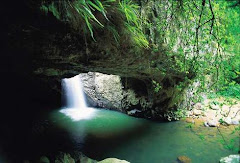Australian Currency
The Australian Dollar is divided into 100 cents. One and two cent coins are no longer distributed, but many items in shops and stores are priced in unusual amounts, for intance $1.97 or $9.99. The law provides that the total bill is rounded either up or down to the nearest 5 cents. Therefore, $19.97 becomes $19.95, and $19.98 would become $20.00. Coin values are 5c, 10c, 20c, 50c, $1 and $2. Notes are $5, $10, $20, $50, and $100, they are also colour coded and made from a plastic. This provides better security against counterfeiting. They last four times longer than the conventional paper notes (fibrous). The original notes are cleaner than paper notes.
Exchange Rate-
1 AUD= 0.94168 CAD, 1 CAD= 1.06193 AUD
Exchange Rate-
1 AUD= 0.94168 CAD, 1 CAD= 1.06193 AUD
Climate
Climate in West Wine Country tends to be alot drier than the Coast and cooler at night. It has a relatively colder winter in The Barrington Tops and The Valley Inland. Climate varies broadly. The desert is mostly 40% of the landmass and is covered by sand dunes. South-east and South-west have temperate climates and quite fertile soil. Northern part of the country has a tropical climate, which ranges from the rainforest, to the grasslands, to part of desert. Rainfall is highly changeable, frequent droughts which last over several some areas are destroying the landscape. The cold waters cause little moisture that is needed on the Mainland.
~SEASONS~
December -February: Summer
March -May: Fall
June -August: Winter
September -October: Spring
~SEASONS~
December -February: Summer
March -May: Fall
June -August: Winter
September -October: Spring
Australian History
Australia is a constant, culturally varied, independent society with a capable workforce and a physically powerful economy. They have a population of more than 21 million. This population includes Aboriginal and Torres Strait Islanders and migrants from about 200 countries. It is the 6th largest country in the world and the earth's biggest island. It is a country as well as a continent. The Aboriginals occupied parts of the continent before the arrival of the European settlers for approximately 40,000 years. Australia has 10% of the world's biodiversity and a large number of it's native plant, animals and birds that do not exist anywhere else in the world. Australia is commited to protecting it's unique environment and nature. It is the 5th richest nation in per capita terms, and the 6th oldest constantly working democracy in the world. Many migrants have brought with them language skills and other capabilities that are important in todays global economy and workforce. Australia's economy is open and original, with a commitment from the Australian government to maintain a powerful economy growth. Australia has a strong educational system. Their aid curriculm aims to assist people in rising countries to lift themsleves from poverty and responds rapidly when disaster strikes. The key purpose of the Australian foreign and trade policy is to promote our security and long-term prosperity. The eminence of life enjoyed by the Australians is one of the uppermost in the world. Australia's fresh environment, health services, educational and lifestyle merge to make it a beautiful place to live.
Australian Aborigine
The first Australians are estimated to have reached the continent at least 40,000 years ago. Contact with the British settlers, began approxiately in 1788. The recent increase in Aboriginals reflects imporved living conditions and a broad and inclusive definition of aboriginal identity on the part of the government. Among the strong spiritual beliefs that tie the Aboriginals to the land; a tribal culture of storytelling and art; and a difficult colonial history. The tradition of storytelling informs Aboriginals of vibrant cultural life. Song illustrate "Dreamtime", while dances and diagrams drawn in the sand accompany oral tales. Aboriginal art includes sculpture, bark and rock paintings, and baskets and beadwork. Many Aboriginals earn a living by selling their artworks. They lived by hunting, gathering, and there was an extensive intergroup trade throughout the continent. Australian Aboriginals have not impacted society a great deal. Throughout Australian history they have been disposed, hunted down and marginalized; today some of them have choosen to live among the othe Australians.
The Great Barrier Reef

http://www.airah.org.au/AM/Images/Conferene_files/GBReef.jpg
Great Barrier Reef
The Great Barrier Reef is made up of over 2,900 individual reefs and 900 islands. It is located off the coast of Queensland in the Northeast of Australia; it is the worlds biggest living organism. The reef supports a wide variety of diverse life, and was selected as a World Heritage Site in 1981 by the UN. It has been labeled as one of the 7 wonders of the world. About 30% of the reef is protected by the Great Barrier Reef MArine Park. It has been know to and used the Aboriginal Australian and Torres Strait Islanders peoples. The reef is a very popular destination for tourist. Fishing generates AU$ 1 billion per year. Climate change, pollution, and fishing are primary environmental threats to the health of this reef system. Tourism on the Great Barrier Reef is mainly concentrated in the Whitsundays and Carins due to their accessability. There is a daily fee charged that goes towards research of the Great Barrier Reef. The fee endsup being 20%of the GBRMP's income.
Australian Foods
.























